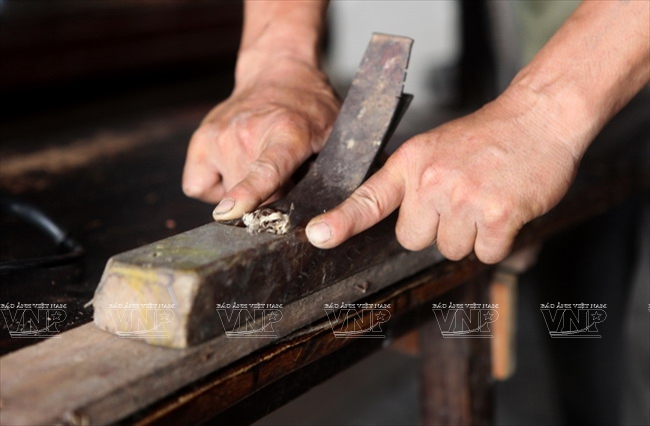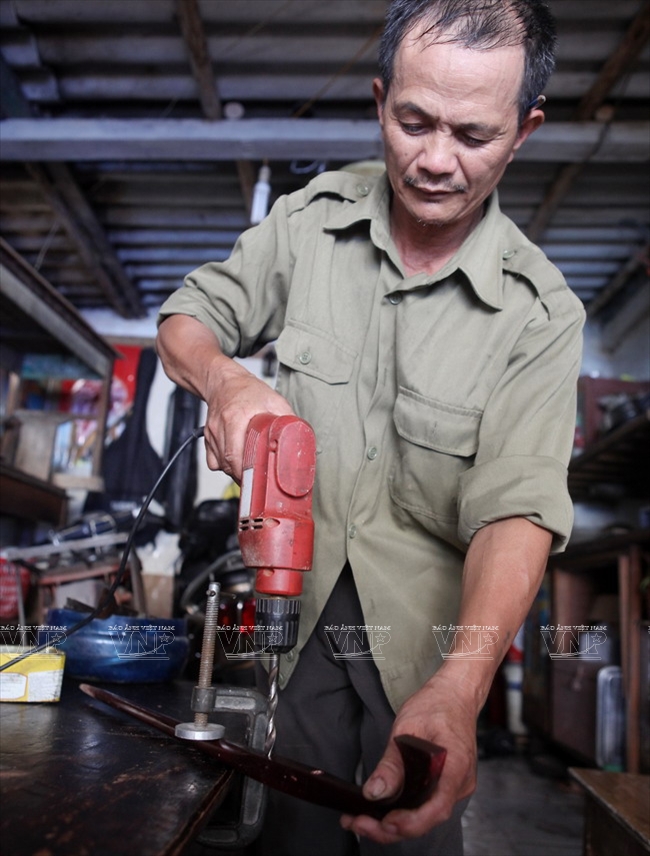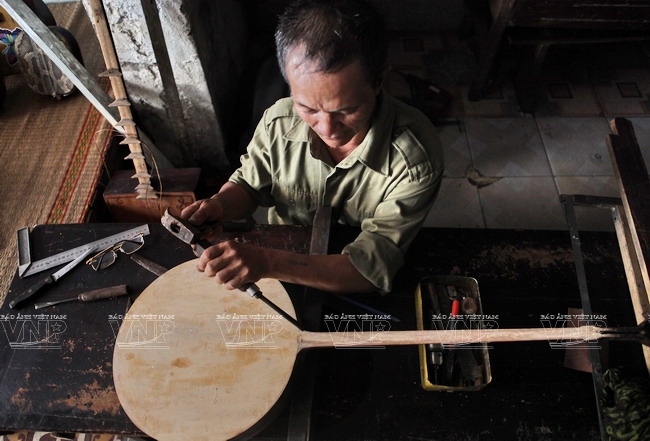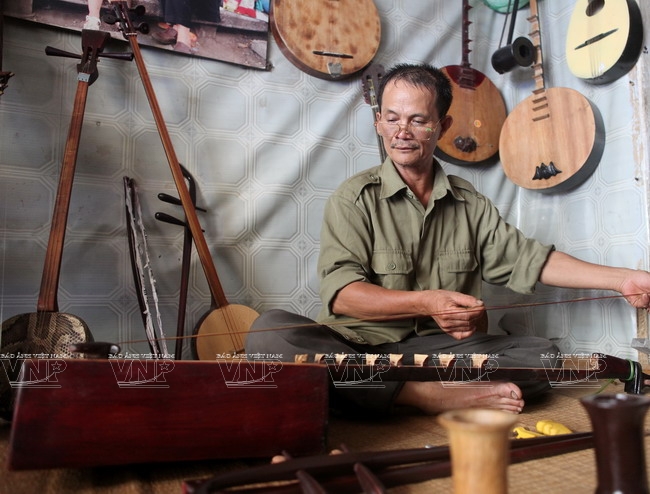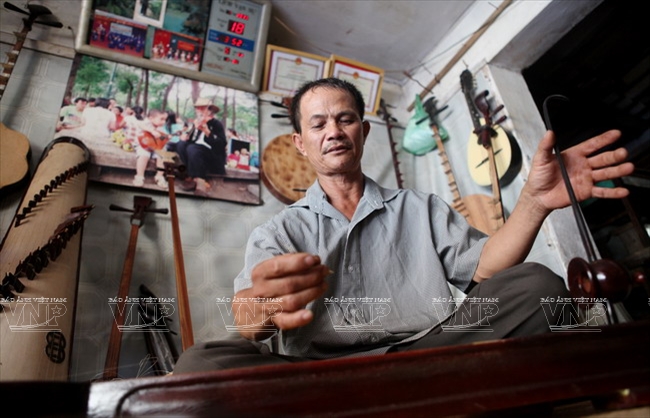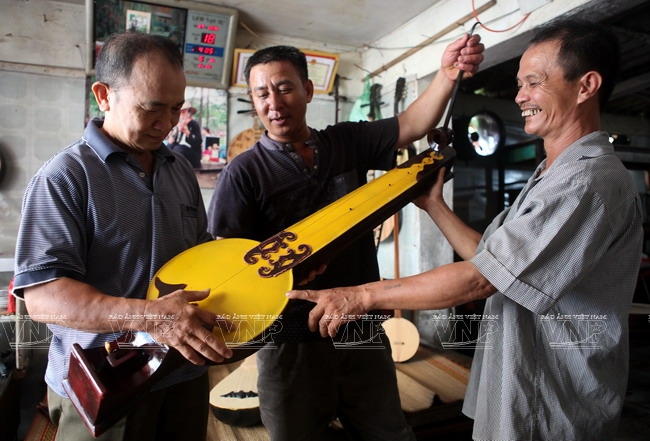In 2004, Kinh and his wife came to Hanoi to sell the instruments to earn money. In his free time, he used to make musical instruments and played them at night. His performances with the instruments attracted more people to come and buy them and some customers special ordered their favorites. The couple decided to open a small workshop at home to make musical instruments. With experience accumulated over many years, plus self-learning and doing research about music, Kinh could make almost all traditional musical instruments.
Kinh spent lots of time travelling to many localities to find proper raw materials for his products, especially good wood such as coral, iron, rose and pine (which is oil-free). Thanks to his tireless effort and patience, the artisan, to date, can make around 20 kinds of musical instruments including different stringed-zithers, flutes, pan-pipes and drums. Most of his customers come from artistic groups and music students as his products are always of high quality and sold at a reasonable price.
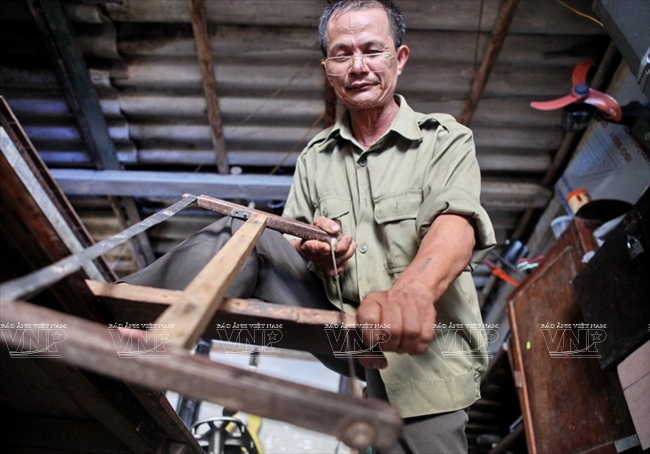 Cao Ky Kinh is sawing wood to make musical instruments. |
While making the instruments, Kinh tries to improve any detail that he can. For example, with the monochord, he changed its resonant box by not using an amplifier, but his instrument’s volume is still three times louder than a normal one, yet produces a lower, warmer sound. With the 16-string zither, he added three more chords to make it produce a clear and echoing sound.
After many years of making musical instruments, Kinh has accumulated knowledge of Vietnam’s collection of traditional musical instruments and he can explain fluently and precisely the functions of each instrument. While the two-string zither has a large volume and clear, softsound expressing sad, innermost feelings, the 16-string zither, with a trapezium shape, has a pure, bright sound, hence it can describe happy and cheerful emotions. The monochord is unique as it has only one string made of spun silk, yet can describe different emotional states. Meanwhile, the 36-string zither can produce a cheerful, melodious sound that goes well with stage performance like renovated opera and traditional operetta.
Products made by the skillful artisan are either in expensive or expensive depending on their complexity or time involved in making therm, and they are the main income of his family. However, the craft makes him happy as it is his favorite hobby that helps him preserve the country’s treasure of traditional musical instruments.

